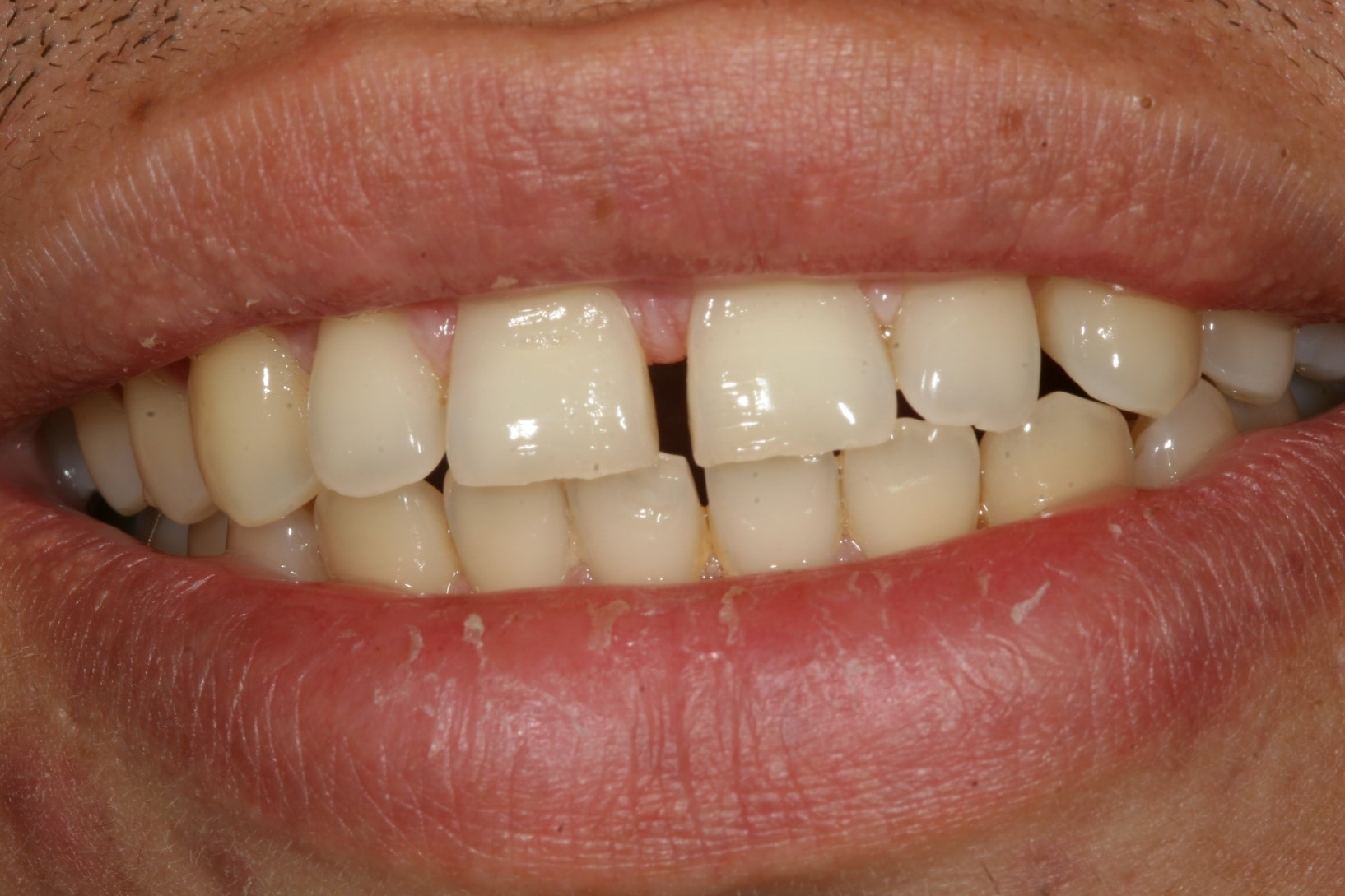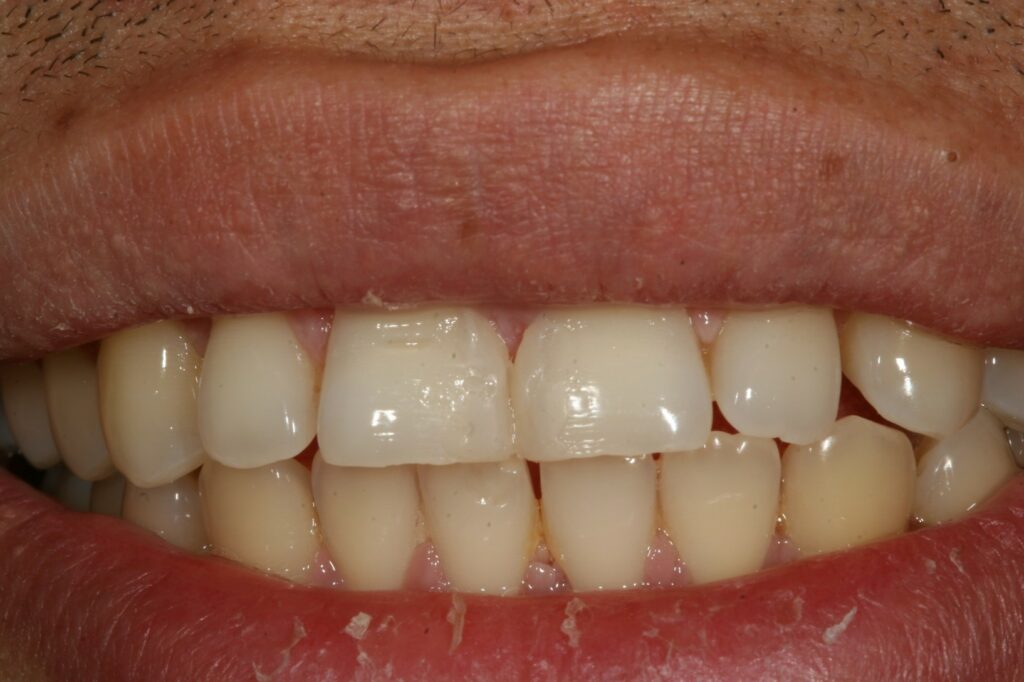Diastema Closure
Diastema refers to a space or gap between two teeth, most commonly seen between the two upper front teeth. There are several causes for diastema, and the treatment process for diastema closure can vary based on the underlying factors contributing to the gap.
Causes of Diastema:
- Teeth Size Discrepancy: If the size of the teeth is not proportional to the available space in the jaw, gaps can occur. Small teeth in relation to a large jaw can lead to diastema.
- Oversized Labial Frenum: The labial frenum is a band of tissue connecting the upper lip to the gum tissue between the two front teeth. If this frenum is too large or positioned incorrectly, it can create a gap between the front teeth.
- Tongue Thrusting: Persistent tongue thrusting against the front teeth can exert pressure and gradually push the teeth apart, resulting in diastema.
- Missing Teeth: Gaps may appear if there are missing teeth, which can lead to neighboring teeth shifting and creating spaces.
- Gum Disease: Periodontal conditions that affect the supporting structures of the teeth can result in tooth movement and the development of gaps. (And remember: periodontal disease is an auto-immune condition!)
Diastema Closure Treatments
The treatment for diastema closure depends on the specific cause and the severity of the gap. Here are some common approaches:
- Orthodontic Treatment: For cases related to teeth misalignment, orthodontic options like braces or clear aligners can be used to gradually move the teeth into the desired position and close the gap.
- Dental Veneers: Veneers are thin, custom-made shells that cover the front surface of teeth. They can be used to mask the appearance of gaps and create a more even smile.
- Dental Bonding: This cosmetic procedure involves applying tooth-colored composite resin to the teeth to close small gaps. It’s a non-invasive and relatively quick solution.
- Frenectomy: If the diastema is caused by an oversized labial frenum, a simple surgical procedure called frenectomy can be performed to remove or adjust the frenum and close the gap.
- Dental Implants or Bridges: When diastema is a result of missing teeth, dental implants or bridges can be used to replace the missing teeth, closing the gap and restoring proper function and aesthetics.
It’s important to consult with a qualified dentist or orthodontist to determine the most appropriate treatment for your specific case of diastema. Contact us for a consultation and Dr. Comfortes will assess the underlying cause and provide you with a tailored plan to achieve optimal results. (818) 990-9101







 The general, cosmetic and reconstructive dental practice of Encino dentist Dr. Isaac Comfortes is devoted to restoring optimal oral health, which supports whole body health and enhances the natural beauty of smiles.
The general, cosmetic and reconstructive dental practice of Encino dentist Dr. Isaac Comfortes is devoted to restoring optimal oral health, which supports whole body health and enhances the natural beauty of smiles.